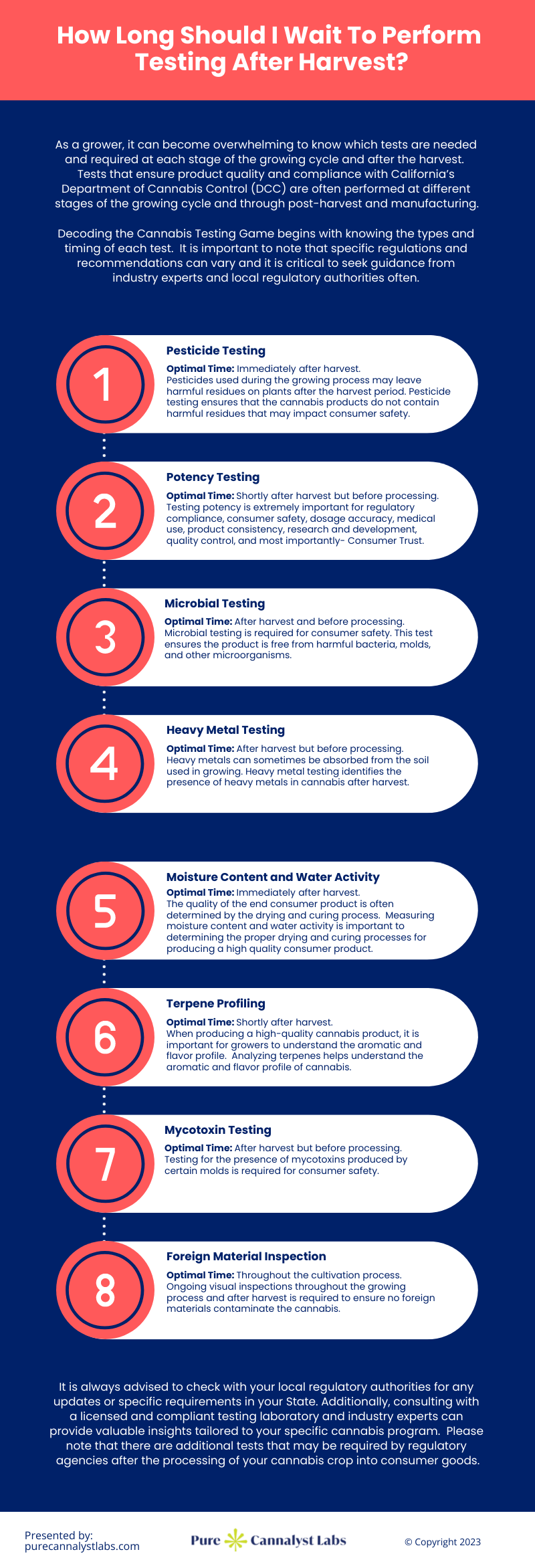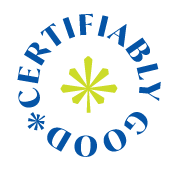As a grower, it can become overwhelming to know which tests are needed and required at each stage of the growing cycle and after the harvest. Tests that ensure product quality and compliance with California’s Department of Cannabis Control (DCC) are often performed at different stages of the growing cycle and through post-harvest and manufacturing. Decoding The Cannabis Testing Game can become a full-time job for growers.
Along with Decoding the Cannabis Testing Game, growers are faced with many challenges and controversies in Cannabis Testing practices. Cannabis is an emerging industry in many states but not yet legal in all 50 states. Therefore, State regulation is not always consistent, and multi-state growers and producers must navigate the compliance complexities in each State.
Specifically, growers in California must ensure that the testing lab they contract with is compliant with DCC and current testing rules. California standardized the testing method for THC potency on Jan 1, 2024. This resulted in only 18 of the 38 labs in California remaining compliant to test California’s Cannabis Flower at the start of the year. As an example of how challenging it is for California Cannabis growers to stay informed and in testing compliance, at the time this article is being written this one rule change impacted 50% of the Orange County cannabis testing labs and they were out of compliance when this new rule went into effect.
Decoding the Cannabis Testing Game begins with knowing the types and timing of each test. It is important to note that specific regulations and recommendations can vary and it is critical to seek guidance from industry experts and local regulatory authorities often.
Below is a general guide for the types of required post-harvest testing and the optimal time to perform each test.
Table of Contents
ToggleCannabis Testing/Timing Guide
- Pesticide Residue Testing:
Optimal Time: Immediately after harvest
Pesticides used during the growing process may leave harmful residues on plants after the harvest period. Pesticide testing ensures that the cannabis products do not contain harmful residues that may impact consumer safety.
- Potency Testing (Cannabinoid Profiling):
Optimal Time: Shortly after harvest but before processing
Determining the potency and composition of the cannabis is achieved by testing for cannabinoids (THC, CBD, etc.). Testing potency is extremely important for regulatory compliance, consumer safety, dosage accuracy, medical use, product consistency, research and development, quality control and most importantly- Consumer Trust.
- Microbial Impurities Testing:
Optimal Time: After harvest and before processing
Microbial Impurities testing is required for consumer safety. This test ensures the product is free from harmful bacteria, molds, and other microorganisms.
- Heavy Metal Testing:
Optimal Time: After harvest but before processing
Heavy metals can sometimes be absorbed from the soil used in growing. Heavy metal testing identifies the presence of heavy metals in cannabis after harvest.
- Moisture Content and Water Activity:
Optimal Time: Immediately after harvest
The quality of the end consumer product is often determined by the drying and curing process. Measuring moisture content and water activity is important to determining the proper drying and curing processes for producing a high-quality consumer product.
- Terpene Profiling:
Optimal Time: Shortly after harvest
When producing a high-quality cannabis product, it is important for growers to understand the aromatic and flavor profile. Analyzing terpenes helps understand the aromatic and flavor profile of cannabis.
- Mycotoxin Testing:
Optimal Time: After harvest but before processing
Testing for the presence of mycotoxins produced by certain molds is required for consumer safety.
- Foreign Material Inspection:
Optimal Time: Throughout the cultivation process
Ongoing visual inspections throughout the growing process and after harvest is required to ensure no foreign materials contaminate the cannabis.
It is always advised to check with your local regulatory authorities for any updates or specific requirements in your State. Additionally, consulting with a licensed and compliant testing laboratory and industry experts can provide valuable insights tailored to your specific cannabis program. Please note that there are additional tests that may be required by regulatory agencies after the processing of your cannabis crop into consumer goods.
Actions You Can Take To Ensure a Consistent and High-Quality Cannabis Product
In addition to establishing a strong relationship with your licensed testing facility and local regulatory authorities, there are several actions that growers can employ internally to ensure consistent and high-quality cannabis products. Investing the time upfront to establish standardized operating procedures (SOPs) for each type of test (quality and compliance) will not only aid in ease of growing and harvesting timelines and planning but will also assist in maintaining strong relationships with authorities and testing laboratories. SOPs will guide growers and their employees with the standards and processes acceptable throughout the growing process to ensure consistent quality.
In closing, cannabis growers that stay on top of best practices, work in collaboration with State regulatory agencies, and develop a strong relationship with a licensed testing lab ensure the maximum return on investment of their cannabis crops. This knowledge also helps growers develop replicable SOPs that lead to consistently meeting quality and regulatory standards without the stress of decoding cannabis harvest testing timing each cycle.
Infographic

